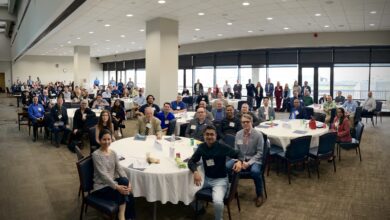
On 17 March 2021, the U.S. House Science, Space, & Technology’s Subcommittee on Investigations and Oversight held a hearing “Brain Drain: Rebuilding the Federal Scientific Workforce.” Its focus was on steadily declining STEM employment across federal agencies.
In his opening remarks, Chair Bill Foster (Ill.-11) noted, “According to data reviewed by the Committee staff, EPA’s workforce declined by 3.9% during the last administration, and over 16% since 2009. DOE’s civil service STEM workforce has not increased in 4 years. EPA, DOE and NOAA have all lost large numbers of STEM workers in key occupations, such as environmental protection specialists, nuclear engineers and oceanographers.” Throughout the hearing, there was a clear bipartisan call for federal agencies to broaden their outreach to recent graduates and job seekers in STEM fields.
The President and CEO of Partnership for Public Service, Max Stier, stated his belief that many students and recent graduates view federal jobs poorly, in part because government shutdowns and hiring freezes may dissuade some from even considering government jobs. Those who do apply are often faced with a wait as long as 100 days to be officially hired. Congressman Jay Obernolte (Calif.-08) articulated the importance of framing the narrative that a career working for federal government agencies is a career of public service.
Dr. Betsy Southerland, the former Director of Science and Technology in the Office of Water at the U.S. Environmental Protection Agency, testified that the EPA’s staffing levels are at its lowest in thirty years. She underscored the need for a diverse workforce of recent graduates at the EPA.
Congressman Ami Bera (Calif.-07) expressed his belief that using student debt forgiveness as an incentive to recent graduates to enter public service could be helpful in attracting new talent.
Dr. Andrew Rosenberg, Director of the Center for Science and Democracy at the Union of Concerned Scientists, also shared this thought and suggested implementing more fellowships.
Candice Wright, Acting Director of Science, Technology Assessment, and Analytics at the U.S. Government Accountability Office, reported that special payment authorities to help federal employees pay off their student debt are in place. She said agencies have found this helpful with employment recruitment, but it’s unknown how long those employees will end up staying at their jobs once their debts have been paid.
Outside of this hearing, other theories have been proposed to explain why so few STEM professionals seek employment with the government. Some IEEE members, for example, have expressed their belief that government work lacks the excitement and innovativeness of the private sector. It certainly can be less lucrative than a job in Silicon Valley, and lacks the possible up-side of a job at a start-up.
IEEE-USA supports efforts to broaden the federal workforce in STEM by helping IEEE members learn about opportunities for engineers within the federal government. Partnerships with the U.S. Patent and Trademark Office, State Department and other agencies give IEEE members direct access to job announcements and recruiting events, information that is frequently transmitted through local IEEE Sections to members in specific cities where hiring is taking place. The IEEE-USA Government Fellowships and WISE Internship programs also give experienced and undergraduate IEEE members unique access to Washington decision-makers — access that frequently results in job opportunities.
IEEE members who are interested in learning more about job opportunities should monitor the IEEE-USA Twitter feed and information from their local IEEE Section. Information on IEEE-USA Government Fellowships and the WISE program can be found at ieeeusa.org.
Kayla Henneberry is policy associate for IEEE-USA government relations.






